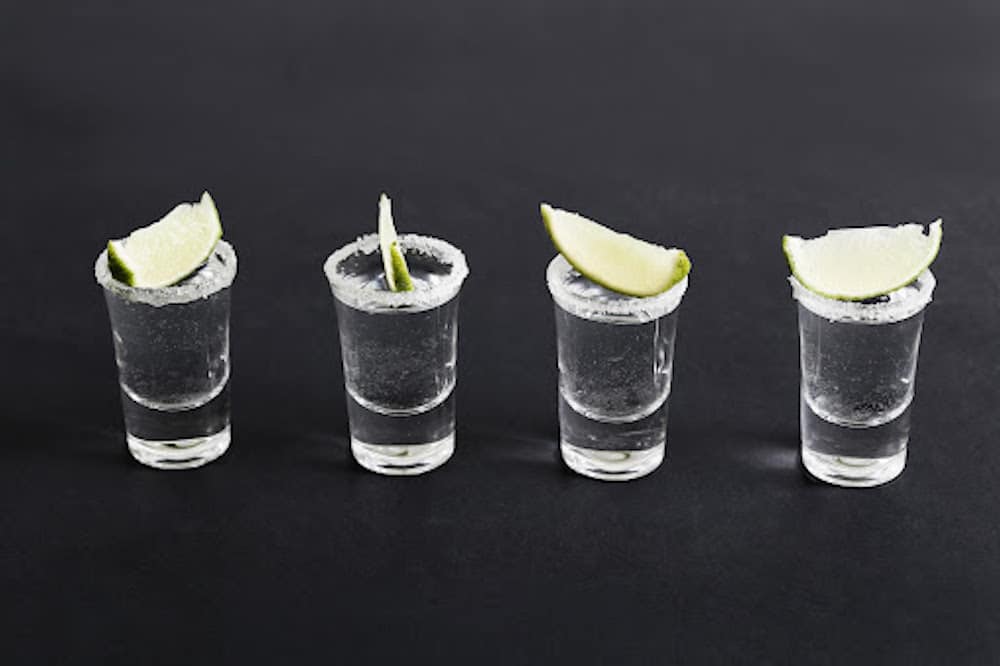Vodka is probably the least disliked spirit in the world. To clarify what we mean, we must discuss alcohol preferences. Everyone who enjoys a drink tends to have a clear set of liquors that they like, and firmly dislike. Brown liquor tends to divide people, many also have tales of regrets about tequila. Vodka tends to be a safe bet for most regular drinkers.
There are many different types of vodka. Therefore, there are several different ways to classify vodka. We could do it by country, by brand, or by age. However, we feel the most effective way to distinguish between vodkas is to do it by ingredient.
Vodka tends to be made with either grain, potato, or fruits and vegetables. Even though potatoes are a vegetable, they are so widely used in vodka production that they need their own category!
The way that vodka is made is by heating water with the starch of choice. Yeast is then added to the pulp where the fermentation then begins and the sugars are converted into alcohol. This alcohol is then distilled for however many times they desire. Vodka, as it is clear alcohol, is often distilled at least two times.
Grain Vodka
If grain vodka brands are your favorite, then we have good news for you. Grain vodka is the most versatile, widely drunk, and available in the most varieties. The most common grain for vodka is rye, however other popular grains include wheat, barley, and corn.
Grain-based vodka has the best representation at bars, with some of the most popular vodka brands using grains. Brands including Grey Goose, Absolut, and Russian Standard are all made from hardy winter wheat. This is probably the most common version of wheat to use in vodka. If you are allergic in any capacity to gluten, these vodkas might not be safe to drink.
Different grains produce different results. For example, Smirnoff uses corn to produce its vodka. Corn vodka has basically no taste when it is used for vodka. It also becomes gluten-free, and very cheap to produce! Brands like Tito’s in the States have cottoned on to this fact, and produce stellar modern vodka in this way.
As previously mentioned, however, rye is the most commonly used grain in vodka. Some of the most famous brands of rye vodka are Zubrowka, Belveder, and Blue Diamond. Rye is incredibly cheap to produce and really lends itself to providing that signature aroma and flavor we love in vodka.
There are other famous vodkas made from different grains, for example, barley is used to produce Finlandia. However, there are very few other famous vodka brands that use these alternative grains.
Potato
Essentially, the base of vodka must be rich in starch. This is why potatoes are so great as they have such a naturally high level of starch. Small potatoes to be exact are the best as they do not have as high water content as the larger ones. Potatoes are also incredibly cheap, durable crops to grow, and can be found all over the world.
It seems that the theme surrounding vodka cops, unlike that of tequila or rum, is that they are durable and grow in intense winter conditions. In Russia or Poland for example, there are incredibly harsh, cold winter conditions that the vodka crops must survive through. This is why potatoes are a favorite.
Chase vodka is probably the most famous of all of the potato-based vodka brands. There is a creaminess that is present in this bottle that is definitely dominant over the grain vodkas. The difference is more in terms of taste, however. The grain vodkas have slightly more bite, apart from corn. The potato vodkas are also great because they can be drunk by all.
Some other famous potato vodkas are Cracovia, Luksusowa, Boyd and Blair, and Grand Teton. It always blows people away to learn that vodka can be made from potatoes.
Fruits and Vegetables
Though less common, you would be surprised to know that a few major vodka brands are produced using fruits and veg. Most famously, Ciroc is made using grapes. The same grapes that are used to make cognac, Mauzac Blanc and Ugni Blanc grapes. These grapes are ‘virtually undrinkable’ unless distilled in the way that cognac and vodka are.
There are a few other established vodka brands that are made using grapes, but there are also a few that are made using vegetables! Though it is not widely known, Horseradish is actually used to make the Hrenovuha vodka in Russia.
These are a few other wild ingredients in vodka production, and we will give a couple of shout-outs to these. Milk is used to create the British-made Black Cow vodka. Rice is used to make the Japanese Kissui vodka. And lastly, figs are used to make the German Kleiner Feigling vodka.


